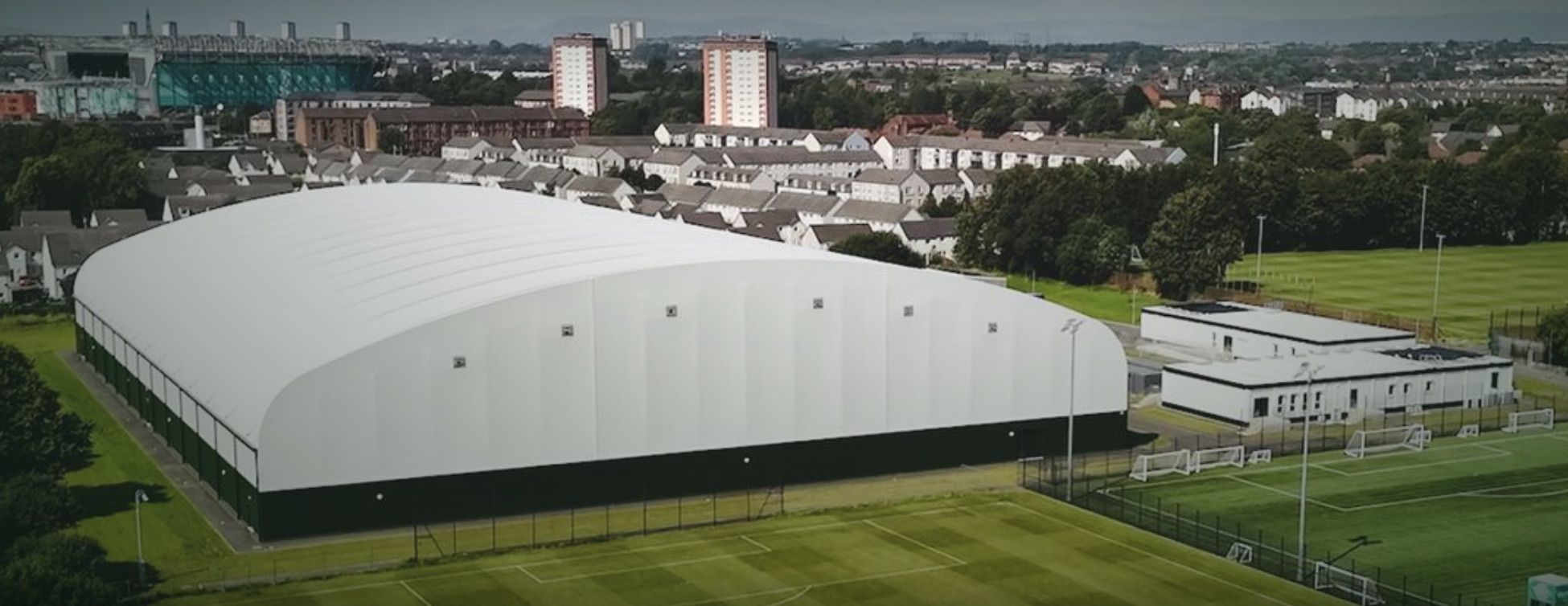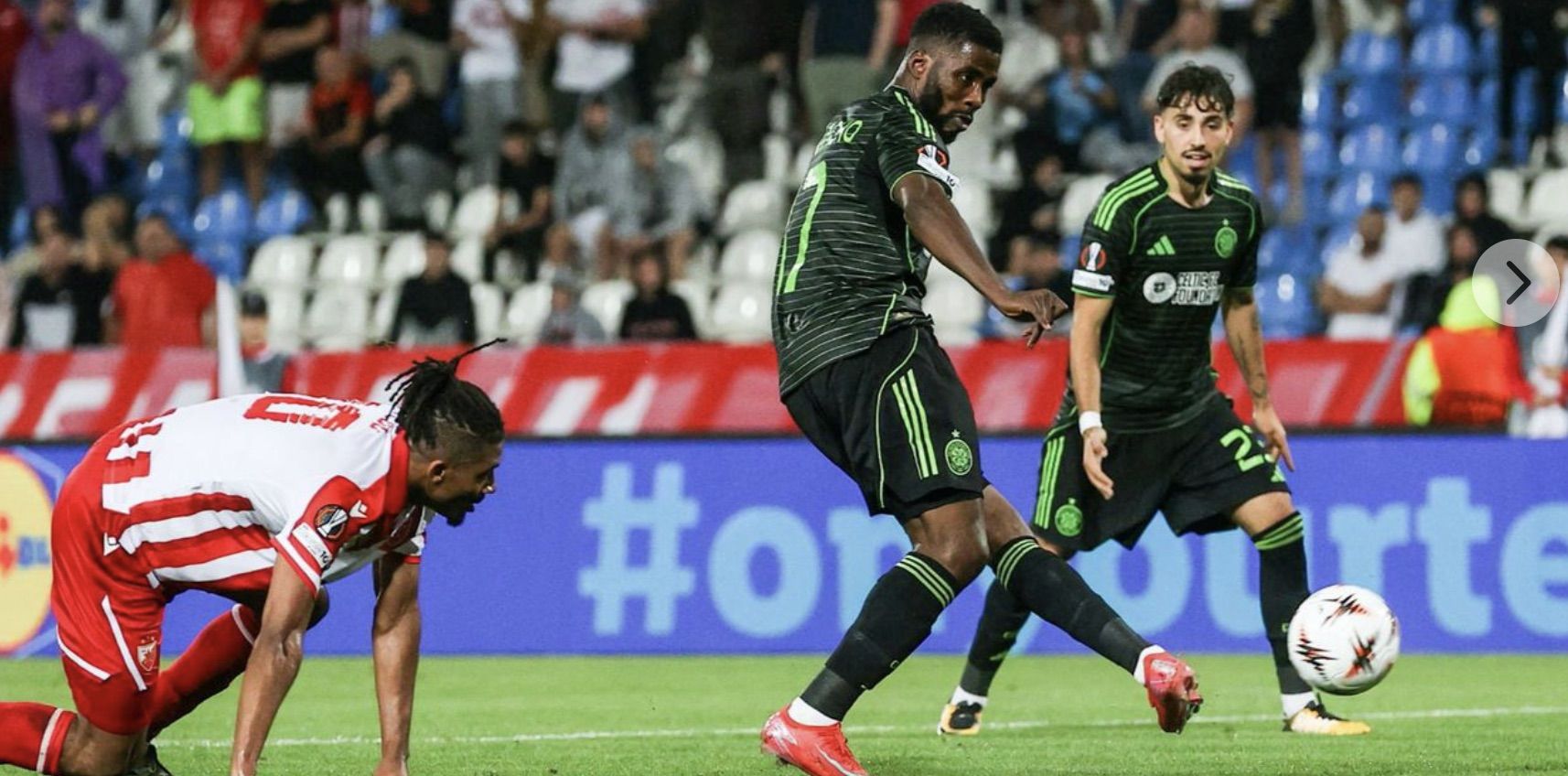ANOTHER turbulent week for Celtic Football Club, though most of the drama has unfolded away from the pitch. Brendan Rodgers and his squad continue their domestic duties with some diligence – and grind out a respectable draw in Europe – but the board and senior leadership find themselves under growing scrutiny from supporters.
The news cycle has been dominated by financial disclosures, the opening of the redeveloped Barrowfield complex, shareholder disputes and increasingly vocal protests from the stands. With Hibernian due at Celtic Park this weekend, the club looks strong on paper but unsettled in spirit.
A creditable start to the Europa League campaign has helped ease the jitters. Celtic were lucky not to go into the break a goal or two or down in a Belgrade downpour against Crvena Zvezda, but an an energetic and creative second half saw them create a hatful of chances before a picture-book goal put them in front on the 55th minute. A driving infield run from Sebastian Nygren finished with a precise pass to Kelechi Iheanacho, who beat the keeper with some style and confidence. It was an assured defensive display into the bargain, a scrappy setpiece equaliser on 65 notwithstanding.
The release of the annual financial results painted a picture of plenty. Revenue rose by more than fifteen per cent to £143.6 million while post-tax profits more than doubled from £13.4 million to £33.9 million. Cash reserves now stand at roughly £77 million, giving Celtic security and flexibility that few clubs in Europe enjoy. Player trading provided the greatest boost with over £30 million raised from the sales of Matt O’Riley and Kyogo Furuhashi. Almost £39 million was invested in reinforcements but the balance still tilted firmly in the club’s favour. For the directors it was vindication of a cautious strategy. But for most fans it was another reminder that ambition in the transfer market has not matched the financial muscle available. The summer window was underwhelming and the disappointment of falling short in that still-painful Champions League play-off against Kairat Almaty only sharpened frustrations.
Alongside the financial report came the unveiling of the new Barrowfield training centre after an eighteen-month redevelopment. The site in Glasgow’s East End has been transformed into a modern home for the academy and women’s teams. Scotland’s largest indoor training dome now stands alongside new medical suites, a gym and classrooms. Changing rooms have been named after players who came through the system before making their mark at senior level including Callum McGregor, James Forrest, Kieran Tierney and Kelly Clark. The project is rightly seen as an investment in the future, but the timing of the announcement made it feel like a distraction. Bricks and mortar are welcome yet they do not make up for perceived gaps in the first team squad or missed European opportunities.
REVAMP: The new Barrowfield has state-of-the-art facilities
While the board pointed to financial health and strong infrastructure the mood among supporters told a very different story. At the League Cup tie against Partick Thistle banners were unfurled calling for the board to go and chants of ‘Sack the board!’ rang around the ground. Some groups staged delayed entry protests to underline their dissatisfaction. It’s clear the discontent is no longer confined to pockets of the support. A new umbrella body known as the Celtic Fans Collective has brought together over 400 supporter groups. They are demanding sweeping change at the top, including the departure of Chairman Peter Lawwell, Chief Executive Michael Nicholson and Chief Football Officer Chris McKay.
The club attempted to ease tensions by inviting representatives to meetings about policing and matchday operations but several leading groups refused. They argued that there was little point discussing logistics when the real issue is leadership and direction. The gap between boardroom and terraces has widened further with every statement and response.
Lawwell in particular remains a lightning rod for dissatisfaction. Having returned to the chair after a short absence he continues to divide opinion. Detractors accuse him of prioritising balance sheets over ambition and of offering carefully worded statements that fail to address deeper concerns. Nicholson has admitted that the summer window was not strong enough and promised lessons will be learned. He insists that the financial platform now allows Celtic to invest more wisely – but words alone are unlikely to restore trust.
On the playing side Rodgers has had to contend with injury problems that threaten to stretch his squad. Right back Alistair Johnston has been ruled out for around three months with a hamstring injury although his recovery is said to be slightly ahead of schedule. In his absence Anthony Ralston has been drafted in and academy graduate Colby Donovan has been given opportunities to step up. There are also fitness concerns around defender Auston Trusty, leaving Rodgers to shuffle resources in key positions.
The manager has praised the attitude of those filling the gaps and stressed that there is no room for excuses. He has spoken about the need to channel resilience, pointing to Celtic’s history of overcoming setbacks and urged his players to respond with character.
That message will be tested in the coming days as Hibernian visit Celtic Park. The Edinburgh side arrive eager to cause an upset and will look to exploit the current drift at the club. Matches between the two clubs are rarely straightforward and Hibs tend to raise their game against Glasgow opposition. Rodgers knows that with Johnston absent and others returning from knocks the balance of his line up will be under scrutiny. Supporters will be watching closely to see whether the team has enough bite in attack and stability in defence to see off a side that is always organised and energetic. Beyond the tactical questions the fixture carries symbolic weight. A convincing win would help restore confidence and bring some calm while anything less would only fuel the growing protests.
Celtic approach the match financially secure and with state-of-the-art facilities. Yet those achievements rather than uniting club and fans have become flashpoints in a wider debate about ambition and identity. The next few weeks will be significant. Success on the pitch can provide short-term relief, but in the longer run the board must decide whether to stay the course or genuinely engage with their critics.
What is at stake is more than financial stability. It is the trust and unity of a support that has always held its club to account.




